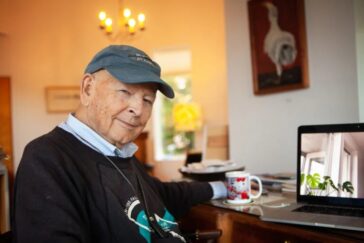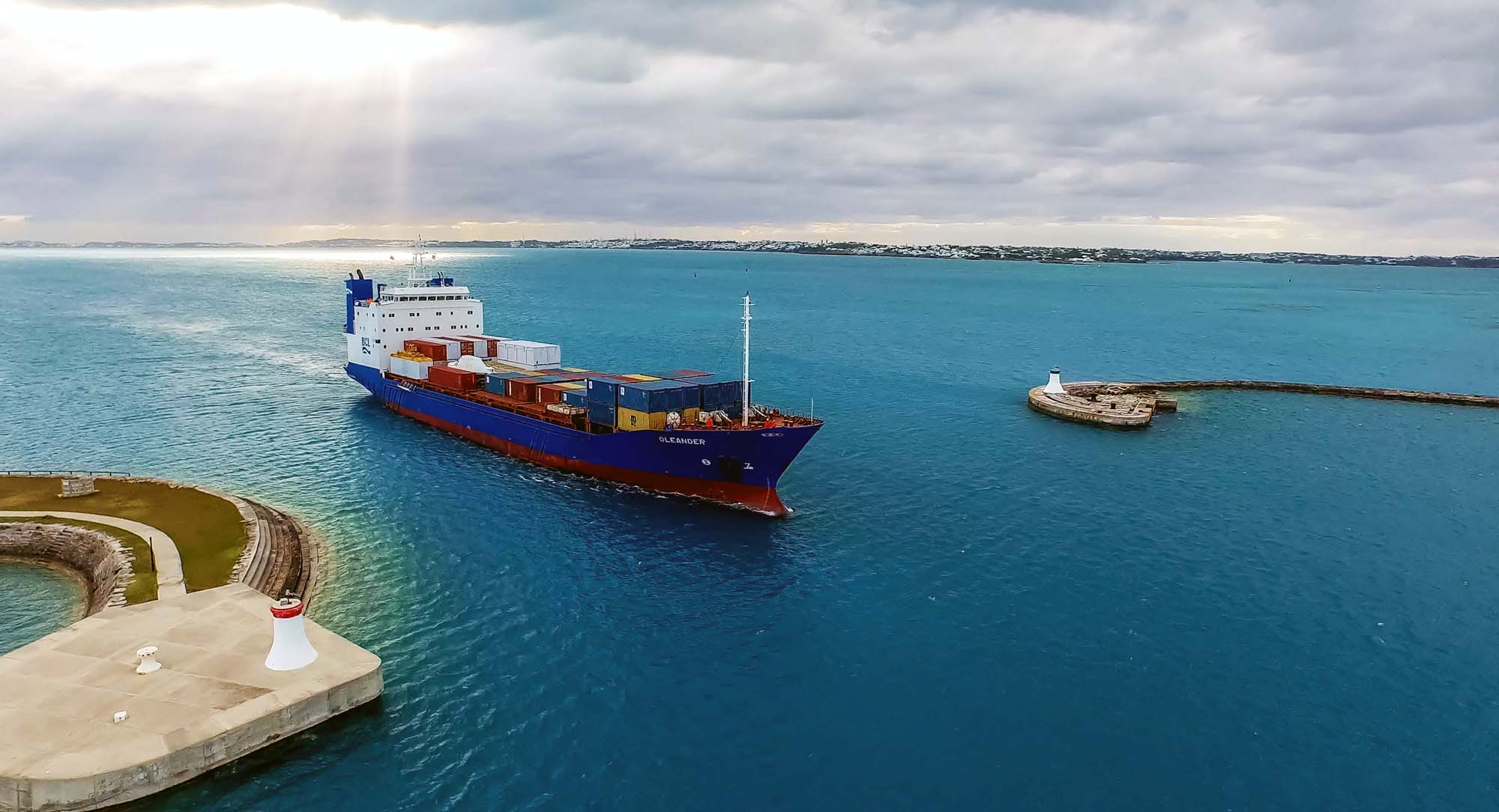Uses a century’s worth of data to report on Atlantic Ocean between New England, Bermuda and Africa
March 9, 2023
Messages in a bottle often carry information from another place and time. For University of Rhode Island professor emeritus H. Thomas Rossby, the messages he’s received came from seafarers and oceanographers past, as he recently combined century-old data, and a novel way of capturing modern data, to produce a report on the Atlantic Ocean that gives oceanographers a better understanding of the Atlantic Meridional Overturning Circulation (AMOC).
Lay readers are likely familiar with the Gulf Stream, which is part of the larger Atlantic circulation system.
Both are important for study as the Gulf Stream, a sort of express lane that transfers heat from low to high altitudes. A slowing of its current would have significant impacts on weather, humans and sea life.
Whether it’s slowing or not has been widely debated for about 25 years reflecting the many different approaches people have taken to its study. While the Gulf Stream is constantly shifting and varying in strength, Rossby and collaborators find no evidence that the Gulf Stream is weakening as other studies have suggested.

Rossby and other ocean scientists perform their calculations on a large canvas, one covering Florida to Africa and Labrador to Greenland. To tackle that vast geographic landscape, the oceanography professor employed ships that already tack across these distant points to help gather data.
Rossby has long been a proponent of using seagoing vessels for science. He’s a firm believer in tangible evidence; at his retirement from full-time teaching in 2011, he holds the record for most ocean-going research on URI’s research vessel Endeavor. In his six-decade career, Rossby estimates that he’s spent a total of two years at sea for science. His view is: how can we possibly learn about the oceans without ships?
Oleander launches
Rossby set out to measure ocean currents using an acoustic Doppler current profiler (ADCP), installed on merchant marine vessels in regular traffic.
In 1992, Rossby put one in the hull of the Oleander, which sailed weekly from New Jersey as the key supply vessel for Bermuda. Rossby has long advocated for oceanographers to use merchant vessels as a way to gather needed data. Rossby says, “The Oleander offered a terrific route for us: it cuts across the shelf waters, the cold slope waters north of the Gulf Stream (from the Labrador Sea), the Gulf Stream, and the Sargasso Sea.”
He later went on to add a current profiler on the Faroes ferry Norröna (operating between Denmark, the Faroes and Iceland) and the Greenland vessel Nuka Arctica that sailed between Greenland and Denmark. To date, the Oleander has collected more than 1,000 crossings of the Gulf Stream.
Rossby, in effect, uses merchant vessels as sea-level satellites; they can reach way below the surface. “The merchant marine has a presence on the high seas second to none,” he says. “They are willing to help in any way possible to improve our understanding of the ocean and how it is changing over time. These vessels have gathered valuable data for us.” Getting this kind of data lets researchers explore and ask questions they might not normally think of or that would otherwise be out of reach.
In 2009, Rossby was one of the pioneers in codifying the partnership between scientists and the maritime industry, with colleagues from around the world. Before crowdsourcing became a word, scientists partnered with the maritime industry for ‘ship-sourcing’ — to gather freely distributed data as a resource to understand the global ocean and the climatic state and health of the planet. Rossby hopes to see such research continue using these “ships of opportunity.” “Ships are a powerful tool,” he says. “You can see exactly what the ocean is doing, see the machinery of the ocean in detail.”’
With weekly trips over 30 years, the Oleander gathered a wealth of information about the Gulf Stream for Rossby and other scientists. Rossby’s ingenious idea for data gathering can help scientists address big-picture issues, looking at the ocean and climate, even as they continue to debate the stability of the Gulf Stream.
Slight Gulf Stream slowdown does not signal alarming decline, Rossby reports
Rossby’s conclusion was recently published in the AGU Geophysical Research Letters with URI Graduate School of Oceanography (GSO) associate professor Jaime Palter and professor Kathleen Donohue. Rossby and his colleagues used hydrographic data taken since the 1930s to examine the Atlantic circulation system. Their data indicated a slight slowdown of the circulation from 1930 to 2020, reflecting a slight shift in wind patterns but not a slowdown in the AMOC or the transport of warm water north.
Jaime Palter says she and Rossby, and Donohue, have been debating whether or not the system has slowed pretty much since the day she arrived at GSO in 2015. Palter thought that the rapid warming in the western North Atlantic since the 1950s suggested that it had, but more recent direct observations from the Oleander pointed toward stability at least since the 1990s. Two years ago, Rossby mentioned that he knew of high-quality data all the way from the 1930s that could be used as a baseline to look at the change — and they set out to examine the data.
Palter is excited that they were able to piece together a long reconstruction of the trends in the current system and grateful for the careful oceanographers of the 1930s. She said their team today knew that the western basin was warming quickly over the top kilometer of the ocean, but were surprised at the stability of the temperatures at Bermuda below one kilometer. They concluded that changes in the eastern basin of the Atlantic off of Africa are somewhat uncertain, but probably not keeping pace with the rapid warming being seen off the Northeast United States.
Rossby concludes that most of the Gulf Stream slowdown cannot be attributed to an AMOC decline and that the feared worst-case scenario is, thankfully, less likely. “Water is overturning and flowing in the Irish Sea, northern North Atlantic, and on to the Nordic Seas,” Rossby says. “There does not seem to be cause for concern — at least at this time.”
Rossby’s study of the Gulf Stream and Atlantic circulation joins other research taking place at GSO. Ph.D. candidate Farrah Hanifah came from Indonesia to study ocean warming; her work suggests that circulation changes in a region near the Grand Banks of Newfoundland could be key. Management of the Oleander project is being transferred to the Woods Hole Oceanographic Institution for a new chapter of work with oceanographer and principal investigator Magdalena Andres (’95, ’01, ’08).
Rossby is happy to see a new generation continue these studies. “There are tremendous forces at work,” he counsels. “Scientists need to take the long view and do generational research.”

